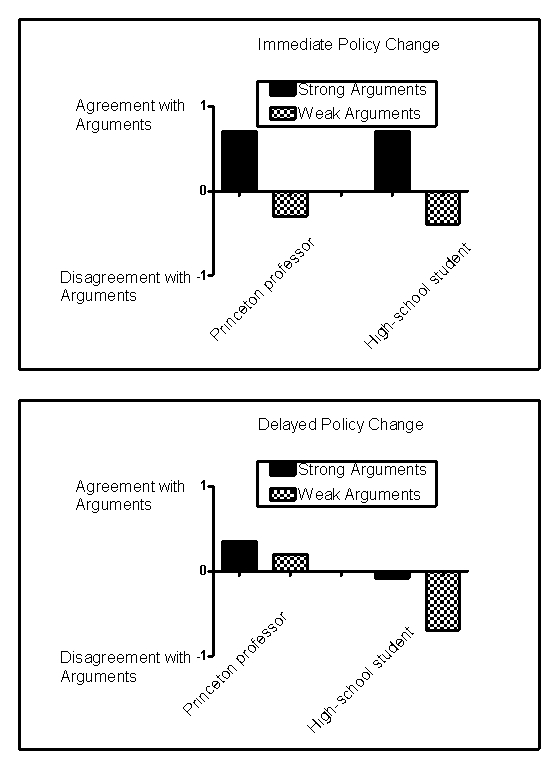Use the following to answer questions :
Scenario II
The scenario contains fabricated results consistent with the following study:
Petty,R.E. ,Cacioppo,J.T. ,& Goldman,R.(1981) .Personal involvement as a determinant of argument-based persuasion.Journal of Personality and Social Psychology,41,847-855.
Every day,consumers are exposed to scientifically based sales,marketing,and public relations strategies designed to influence purchasing decisions,change opinions,or win votes.One common sales strategy is the foot-in-the-door technique,a method that involves first making a smaller request that consumers are likely to grant and then following it with a larger request.Another common strategy is the door-in-the-face technique,which involves making an unreasonably large request that consumers will reject and then following it with a smaller request.When persuasion is necessary,it usually takes one of two forms: heuristic persuasion,which involves an appeal to habits or emotion,and systematic persuasion,which involves an appeal to facts and reason.Often,people will rely more on heuristics-simple shortcuts or "rules of thumb"-to make decisions instead of systematically weighing the evidence.
Petty and colleagues (1981) investigated some of these techniques in university students listening to arguments in favour of their university requiring an institution-level comprehensive final examination for graduation.Some students were led to believe that,if adopted,this policy would take place right away,and some were led to believe that the change would take place in a decade.In addition,some of the students were led to believe that they were listening to an argument from a Princeton professor,and others were led to believe that they were listening to an argument from a high school student.Finally,some students heard strong arguments in favour of the policy,and some heard weak arguments.Thus,the experiment arranged six groups of students.For example,one group of students heard strong arguments from a high school student about a far-removed policy change.Figure 13.1 shows fabricated results illustrating the major findings of this experiment.
Figure 13.1 
-(Scenario II) Which example describes systematic persuasion?
Definitions:
Suicide
The act of intentionally causing one's own death.
Criminal Activity
Actions that involve conduct deemed illegal by law, potentially leading to prosecution and punishment.
Working-Class
A social group consisting of people employed in low-paying wage jobs or manual labor.
Merton
Refers to Robert K. Merton, an influential American sociologist known for his theories on social structure, anomie, and the sociology of science.
Q13: Walter Mischel argued that personality traits do
Q69: Somatic symptom disorders are considered psychological disorders.
Q109: (Scenario II)In a classic study in cognitive
Q130: _ are especially prone to suffer from
Q168: Walter Cannon coined the term fight-or-flight.
Q266: Upon his retirement,Charles is slightly more likely
Q297: When her sister was born,4-year-old Gracie began
Q328: Narcissists tend to have low self-esteem.
Q333: An expectant mother is listening to her
Q367: Developers of projective tests assume that people